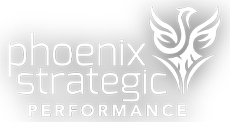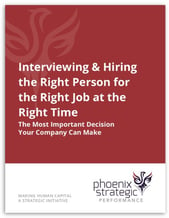When an organization is going through change (however it is initiated), its ability to strategically leverage Learning & Development (L&D) to accelerate the business through the cycle of change can be a key, strategic differentiator.
Employees who feel satisfied and successful are more engaged and perform at a higher level. This final stage of satisfaction and success is rarely achieved automatically without deliberate planning, action, and accountability.
Accelerating through the change cycle can move an organization to peak performance faster.
Peak performance delivers desired and planned strategic organizational results. L&D can:
- Prepare an organization to help balance overt optimism and lessen the depths of unfounded pessimism
- Build competencies at the individual and organizational levels, speeding both through the typical downward drop and accelerating movement toward peak performance
Viewed this way, L&D must be considered a strategic initiative and priority integral to any change event. So what do we need to do to leverage L&D to maximize its strategic impact?
Top 10 Critical Success Factors To Leverage Learning & Development:
- Leadership / Stakeholder sponsorship: There must be continuous leadership/stakeholder sponsorship from both the enterprise and the business directly impacted by the change events. Identifying the leadership/stakeholder sponsorship can be complex and challenging in a matrix organization. For success, the business partner and/or owners must be an active sponsor throughout the entire process.
- Leadership / Stakeholder participation is required (it is not optional): The L&D efforts must have stakeholder involvement. They must take time to listen and act as role models. It is essential to evaluate those who are supporters, neutral or passive, and identify, recruit and train stakeholders to be "Role Models ." Active participation will be critical throughout the process.
- Building the project definition early is important: The Learning Function must be actively connected to the changing business operations and related workforce needs. All involved in the process must define the project charter with clear objectives and priorities. This planning is critical and must be done very early in the process.
- The learning programs must be a blend: The learning programs need to focus on developing the priority skills, competencies, and capabilities addressing the learning around the application of the above in the new strategy or environment. The learning programs must answer the questions, "what do I need to do my job?" and "what's in it for me?" In addition, the learning programs need to be embedded with the critical communication points on the vision and platform to bring it all together, as noted later.
- Understand the gaps you are trying to fill: All leaders involved need to reassess business strategies, operating models, and the required skills, competencies, and capabilities to address current and future operating gaps. This is not about being creative in identifying current or trendy topics for L&D. It is about developing L&D programs that fill the needed gaps in your talent pool to execute the strategy, build confidence in your workforce and have them engage in the strategy because they know how to do their jobs.
- Design and build the comprehensive learning program(s) with consensus from the stakeholder team: The involvement of the stakeholder in the planning is critical. Stakeholder feedback is continuous and must be regular because this creates and sustains stakeholder sponsorship. There must be a constant feedback loop to the head stakeholder and communications to the entire group, including internal and external stakeholders. Include logistics to cover the best way to get things done and link senior participation in the L&D event. Use L&D strategically to facilitate change and build resilience and organizational agility.
- Obtain approval on resource requirements: It is imperative to determine the resource requirements dedicated to the learning and development efforts. This includes the development of internal and external expert resource allocation and the total budget for the L&D programs and communications. It also requires consideration of existing L&D budgets and programs. Do not forget that the businesses typically have an adequate budget and are also likely to be the benefactors of the resulting return attributable to the improved performance and speed to peak performance. Remember, only the most appropriate resources will create the results that will support ROI for L&D.
- Build and embed a communication strategy: It is important to have a communication strategy and plan included as an integral part of the L&D programs. This plan should be scripted, tailored, and aligned to support the learning events. Learning leaders must use the details of the communications throughout the learning events to provide the "vision" and purpose to enable workforce understanding and adjustment to change. Stakeholders can / must provide the passionate appeal for the change to tap the people's emotions and "hearts." The people also can respond with confidence that they understand and commit to the strategy.
- Develop a plan for the L&D with experts, management, stakeholders, and key resources participating: Break the training into the smallest teaching segment with rationale for each segment. Everyone can then understand what will happen, when, with whom, and why. The accumulation of knowledge should have a deliberate layered approach using a variety of learning channels to make it 'stickier' over time.
- Develop measures to assess and connect changed behaviors and skills: There must be accountability for change in behaviors aligned to strategic outcomes with both measures and follow-up for accountability. Consideration should be given to motivation testing and feedback to measure what motivates people and how to impact the potential level of engagement. Adjustment, when necessary, should also be built into the process. This will provide a mechanism for accountability and an understanding of how to support and sustain the change or strategy through other programs like rewards and recognition.
As you can see, L&D must be considered a strategic business initiative and a high priority integral to any change event at your company.
Download our checklist, Critical Success Factors for High Impact Learning & Development, to see what is necessary to increase the impact of L&D at your company.
This blog was co-authored by Joanne Flynn, Jim Bosserman, and Debbie Gower. This article brings together perspectives and research from three strategic performance and learning and development professionals.






